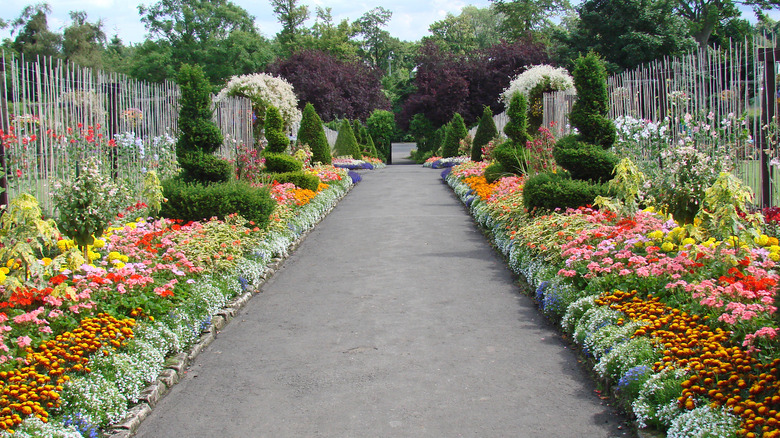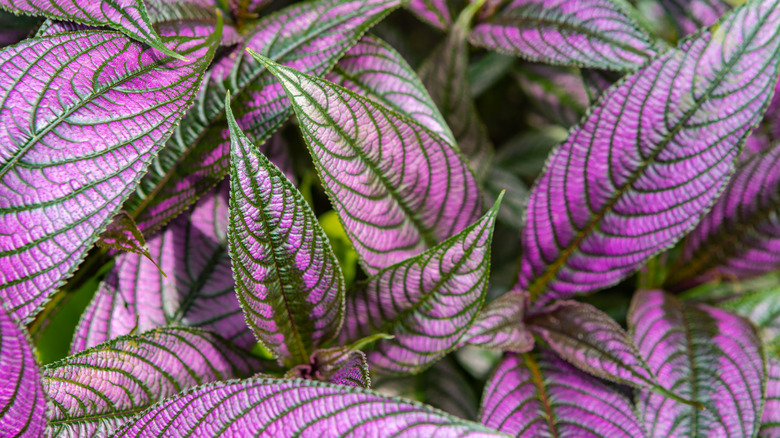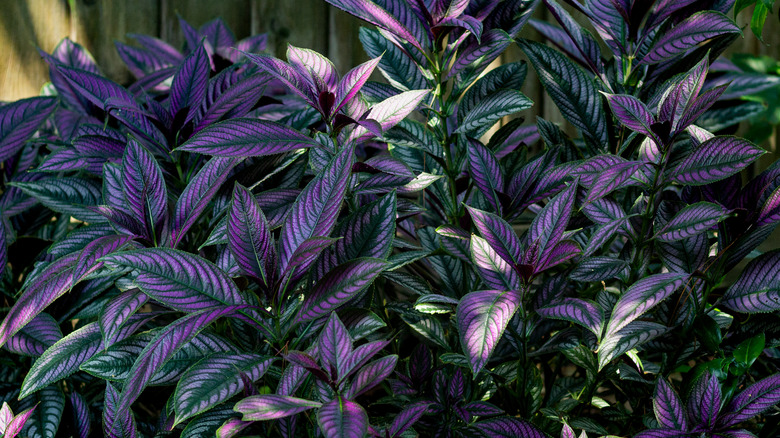The Victorian-Era Foliage To Grow In Your Garden For A Vibrant Pop Of Color
The Victorian era, known for distinctive and elaborate garden styles, continues to inspire gardeners who want to infuse their outdoor spaces with a blend of historical charm and vibrant color. The stunning Persian shield (Strobilanthes dyerianus), is the perfect throwback plant to the opulence of the Victorian garden with dramatic, colorful foliage.
In 1836, the Persian shield was brought to Kew Gardens. Native to Myanmar (Burma), this plant perfectly embodies the Victorian era's love for exotic and visually striking plants. The Persian shield plant has black and purple leaves and a large, bushy growth habit. In hot and humid climates, it explodes with growth due to conditions that are similar to those of its tropical origin. It survives in cooler climates and containers but stays small. In U.S. Department of Agriculture (USDA) zones 10 and higher, it grows as a perennial. In cooler zones under 10, it's grown as an indoor plant or as an annual. Planting this Victorian-era foliage plant is sure to bring a pop of color to your garden.
Is Persian shield easy to grow?
In areas where temperatures do not drop below 45 degrees Fahrenheit, it remains an easy-to-grow evergreen bush. Its ideal growing conditions include a hot, humid environment. In optimal sunlight, temperature, and humidity, it can grow up to 5 feet tall and 3 feet wide. Additionally, its leaves can reach up to 8 inches long and develop a deep iridescent purple and black coloring with a dark green backdrop.
It requires frequent watering of at least an inch per week. In sunny, tropical climates, daily watering is best. Regular pruning of your plant can help it maintain its shape. Gardeners can prune old leaves to encourage fuller and dense growth. This type of pruning also helps it become overly leggy and out of control. If you're taking your Victorian style indoors, one mistake to avoid while pruning is doing so after the plant flowers. After it's flowered, it's starting to enter dormancy and needs to be left undisturbed by pruning until the spring.
Where is the best place to plant Persian shield?
While the Persian shield is grown for its colorful foliage, it won't disappoint whether you choose to grow it in your garden bed or in containers. It's perfect for focal points or mixed with flowers like nasturtiums, forget-me-nots, or other colorful foliage plants that aren't flowers, such as purple heart, sweet potato vine, coleus, or dichondra.
In its native setting, Persian shield grows in filtered light at the edges of tropical forests. So, to make sure it thrives in your garden, you'll want to provide it with similar growing conditions. While it can handle full sun in cool climates where it grows as an annual, in climates similar to its natural habitat, it'll do best with part or dappled shade. If you're growing Persian shield indoors, make sure it gets plenty of bright light. Its foliage will benefit from some direct sunlight, keeping it vibrant and lush. Whether Persian shield is nestled in a garden or in a container, it infuses any space with Victorian charm and bold splashes of color.


